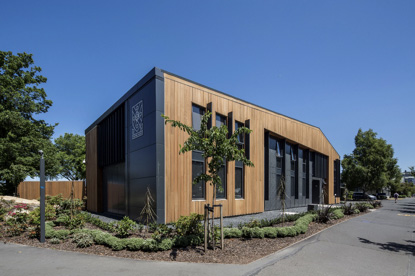
The world-renowned "Dunedin study" now has a purpose-built home for the first time in its history - a $2.6 million building designed to suit the people being researched.
The Dunedin Multidisciplinary Health and Development Study has been closely following the progress of more than 1000 people since they were born in Dunedin in 1972 and 1973.
Groundbreaking
Researchers' finding that most youths grow out of crime even sparked a law change in the United States, so juveniles younger than 18 can no longer be sentenced to death, saving the lives of more than 70 young people on death row at the time.
The researchers' work also led to the creation of New Zealand's Health and Development Record for all children younger than five.
The unit's researchers have produced a paper for a scientific journal every 13 days on average for more than 40 years, providing a treasure trove of information about human health and well-being that has also influenced other policy-makers nationally and internationally.
Teams of national and international collaborators also work on the Dunedin Study, including one at Duke University in the United States and another at Kings College London.
New home
The new building, on the corner of Union Street and Anzac Avenue, was designed by University Strategic Architect Murray Goldfinch primarily for study members, who return every few years from all corners of the globe to be assessed.
Their one-and-a-half days of intensive interviews and testing covers every aspect of their lives and wellbeing, from mental health to cardiac fitness and respiratory tests.
Because members' identities are never revealed, the study building - on the corner of Union Street and Anzac Avenue - has a private entrance, private parking, and a discreet street façade.
Floor-by-floor
The ground floor is dedicated to research. It includes interview rooms, specialised testing areas and a lounge and courtyard especially for study members.
The first floor has offices and meeting rooms for researchers and support staff.
The 580m² building is clad mostly in vertical cedar with contrasting elements of cement sheet cladding. The exterior also includes a Kowhaihai (tribal genealogy) motif on its front facade.
This project was completed on time and on budget, by Cook Brothers Construction, in a tight timeframe. The University's project manager was Phil Chatfield.
Opening
The building was officially opened on 25 January 2017 by Tertiary Education Minister, the Hon. Paul Goldsmith.
Global and national recognition
Although the study is a public-good research enterprise and was not created to generate export earnings, by 2016 it had attracted more than $NZ17 million from overseas funding agencies, including the United States' National Institutes of Health and the United Kingdom's Medical Research Council, so is making a significant contribution to the Dunedin economy.
Dunedin Multidisciplinary Health & Development Research Unit head Director Professor Richie Poulton was made a Companion of the New Zealand Order of Merit for services to science and health research in 2017, and the study received the 2016 Prime Minister's Science Prize, a $500,000 award.
The University acknowledged the study's huge contribution to science and society in 2017 as well, with a Research Group Award. It was only the second time the University has bestowed that award.
The study was also awarded almost $5 million dollars over five years by the Health Research Council of New Zealand in 2016, for a life-course study on aging, to inform early intervention strategies.
That builds on more than 40 years of investment in the study by the council, and the University of Otago.
The council also recognised unit Director Professor Richie Poulton in 2016 in its 'celebrating research excellence awards', for an outstanding contribution to health research excellence, leadership, and impact.
On TV
A four-part documentary about the study Why Am I? - The Science of Us screened in New Zealand in 2016 and was acquired by at least 17 geographic territories and several airlines. The buyers include BBC Asia and Canal Plus, and their broadcast footprint includes another 60 countries.
More studies
The Dunedin Study has also expanded to include the:
- Family Health History Study that gathered information about the health of study members' parents and families, between 2003 and 2005
- Parenting Study of study members parenting their first-born three-year-old, which began in 1994
- Next Generation Study (commenced 2007) of 15-year-old teenagers of study members to compare with study members at 15. This research started in 2007.
Old home
The study, founded by Dr Phil A. Silva OBE, was originally based in Knox Church Halls then shifted temporarily to the former Barningham Building - behind the Faculty of Dentistry - where it ended up staying for 30 years.
The Unit had to move in November 2015 because the building was being demolished for the faculty's new build and rebuild project.
The study shifted to the Logan Park Annex behind the University Oval while waiting for the completion of its first permanent, purpose-built facility.
The team
Project Manager: University of Otago, Campus Development Division
Architect: University of Otago, Campus Development Division
Quantity Surveyor: Chas E. George & Sons
Contractor: Cook Brothers Construction
